Mountaineering: The new challenges to summitting Everest
As more and more people climb the Everest, experienced mountaineers talk about the peaks, routes and conditions that present fresh obstacles


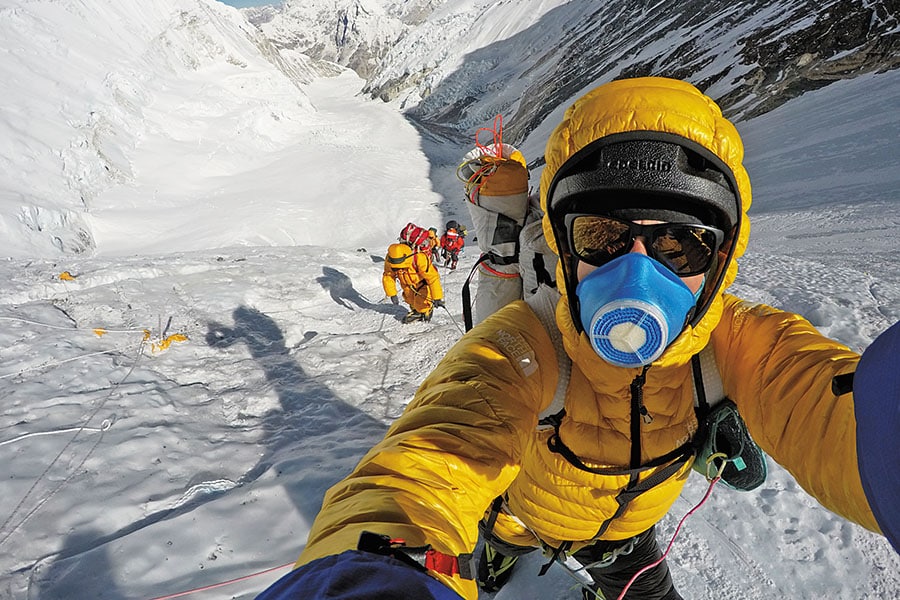 Last spring, mountaineer David Goettler attempted a solo climb of Everest without oxygen via the standard South Col route
Last spring, mountaineer David Goettler attempted a solo climb of Everest without oxygen via the standard South Col route
Image courtesy: David Goettler
“If we can pull it off, it would be the biggest possible thing still to be accomplished in Himalayan mountaineering.”
—Norman Dyhrenfurth, on the west ridge of Mount Everest.
When the Americans prepared to ascend Mount Everest in 1963, they trained their eyes on the unclimbed west ridge route as an additional challenge for their expedition. Before them, only two other parties had succeeded in making the summit: Edmund Hillary and Tenzing Norgay in 1953, and a Swiss expedition three years later. Both had taken what was by then a well-tested route, via the South Col and southeast ridge. But summiting the world’s highest peak via the west ridge was still not accomplished. For, summiting a peak was one achievement, but even back then, there were bragging rights associated with treading an unknown route to the top.
By the end of that season, the American expedition would go down in history for the heroics of Tom Hornbein and Willi Unsoeld, who pulled off a daring climb via the west ridge, a difficult route full of unknowns, with points of no return that that required the duo to fend for themselves en route the summit.
These days, while hundreds of commercial climbers get to the top of the Everest each spring—according to the Himalayan Database, in the 2019 season 692 climbers made it to the top—the lure of the less trodden path remains a constant attraction for seasoned professional mountaineers and explorers, as does the seduction of raising the stakes.
In the winter of 2019-2020, German mountaineer Jost Kobusch trained his eyes on the west ridge, just like Horbein and Unsoeld in the 1960s. Only now, he had added the extra challenges of climbing solo and without supplementary oxygen. “When I look at a mountain, I have a holistic approach, where I consider everything—logistics, the money I need to raise, and the technical aspects of climbing,” says Kobusch. “The project must be challenging, else there is no point attempting it. To me, winters are the last, wild playgrounds and it makes things more difficult. The west ridge was the most beautiful line on the mountain, especially in these circumstances.”
Kobusch plotted his way up, ensuring there was always a margin of safety and an exit plan in case of rough weather. For instance, a 150 m section of the route was secured using ropes, ensuring a quick retreat in case of an emergency. An ankle injury and a stomach bug laid him low at base camp for days, and by the time he readied for one final push, he had reset his goal to get to the top of the west ridge at 7,200 m. The summit would simply be a bonus.
“My planning was defensive and cautious, so that there was no pressure. I wanted to be free on the climb and didn’t want to push myself into a dangerous situation. When I reached 7,366 m, I had already overachieved, so turning back was a very easy decision,” he says. “It doesn’t make a difference if you summit at all. It’s about the experience and the process of learning. But at some point if you realise that it’s actually impossible, there is no problem in accepting it.”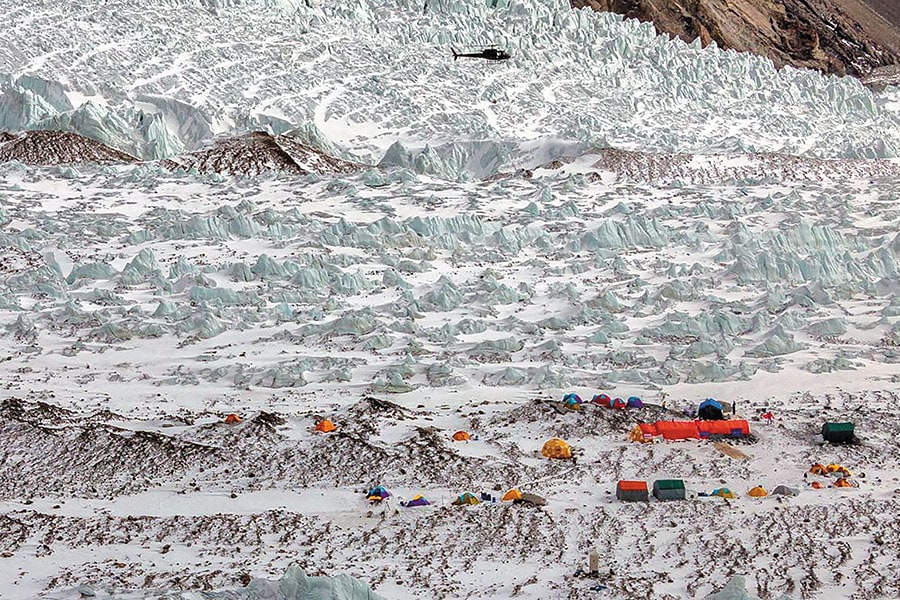 (From left) The K2 base camp. K2, the world’s second highest mountain peak located in the Karakoram, remains the only 8,000er that has not been climbed in winter Adam Bielecki was part of the team that pulled off the first winter ascent of the Broad Peak summit in the Karakoram in 2013
(From left) The K2 base camp. K2, the world’s second highest mountain peak located in the Karakoram, remains the only 8,000er that has not been climbed in winter Adam Bielecki was part of the team that pulled off the first winter ascent of the Broad Peak summit in the Karakoram in 2013
Image: Sayed Fakhar Abbas / Getty Images
While Kobusch was making his way up the west ridge, Alex Txikon was attempting his third winter climb on the Everest over on the regular South Col route. The last time the Everest was successfully summited in winter was in 1993 by a Japanese expedition led by Kuniaki Yagihara.
Since 2011, Txikon, a Spaniard, has taken to climbing the 8,000 m peaks in the off season because there are no crowds during these times. Just before he and his team set up camp for their 2019-20 winter attempt on the Everest, he had acclimatised himself with a climb up Ama Dablam (6,814 m) in the eastern Himalayan range. “The conditions are totally different in winter: Low temperatures and really strong winds that weaken you over time. The idea is to be fast and not spend too much time at high altitude,” says Txikon. “Lightweight ascent in winter is the best option, but via the South Col it’s a long way to the summit and the route must be prepared.”
The gruelling conditions during the rotation climbs (during which they set up camps at higher altitudes en route to the summit) injured compatriot Jonatan Garcia and left Oscar Cardo ill. On the final push for the summit on February 27, the three-man team was forced to turn around before Camp 3 (7,470 m) and abandon the climb. “There was constant rockfall on the Lhotse Face due to warm temperatures. On the last attempt, we had about 45 to 50 cm of snow powder, and there was a risk of avalanches,” he says.
*****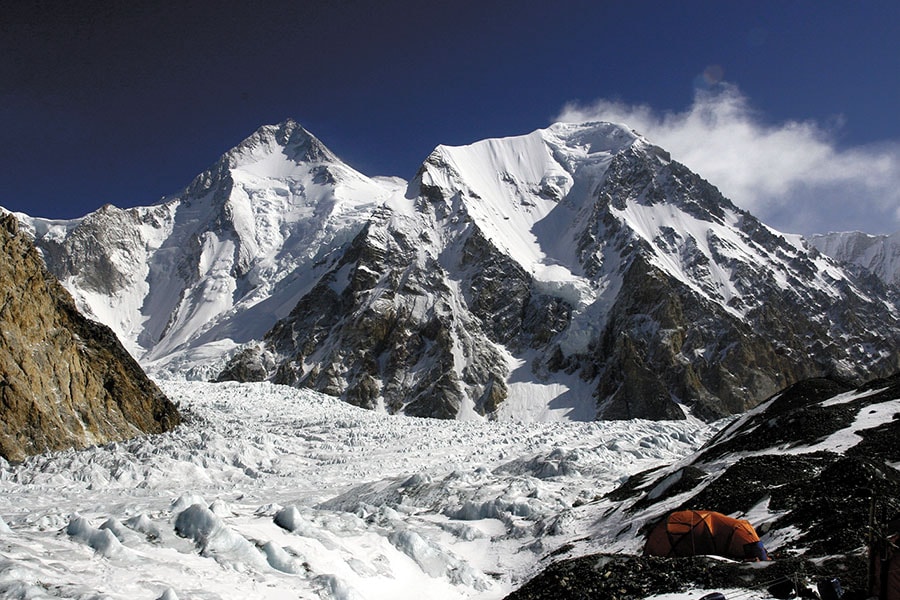 Gasherbrum II in the Karakoram, a spectacular but hostile terrain
Gasherbrum II in the Karakoram, a spectacular but hostile terrain
Image courtesy: Adam Bielecki
Within the global mountaineering community, after all the 8,000ers—there are 14 of them—were climbed in the regular season, winter ascents of the same peaks became a top draw. The trend picked up ever since the Everest was summited in winter by Krzysztof Wielicki and Leszek Cichy of Poland in 1980. It soon became a domain of the Poles, with nine peaks summited by all-Polish teams. That tradition was continued by the next generation of climbers, such as Adam Bielecki from Poland.
“When it comes to the Karakoram Range, it was only as recently as 2011 that the first 8,000er was first climbed in winter. The weather is much colder and the winds way stronger on this mountain range as compared to the Himalayas,” says Bielecki, a member of the teams that pulled off the first winter ascents of Gasherbrum I (in 2012) and Broad Peak (in 2013) in the Karakoram. “I could succeed on two of the mountains only because of more accurate weather reports these days, besides the better gear.”
A tragedy on Broad Peak in 2013, where Bielecki lost two climbing mates, Tomasz Kowalski and Maciej Berbeka, on the descent put a lot of things in perspective for his future climbs. “I used to take on a much bolder approach during my expeditions, but I don’t climb that way any longer. It’s a much safer approach today and I let the sponsors know that there’s just a 5 percent chance of success. When I make it [to the top], the moment is historical, yet I don’t hesitate when it comes to turning back.” 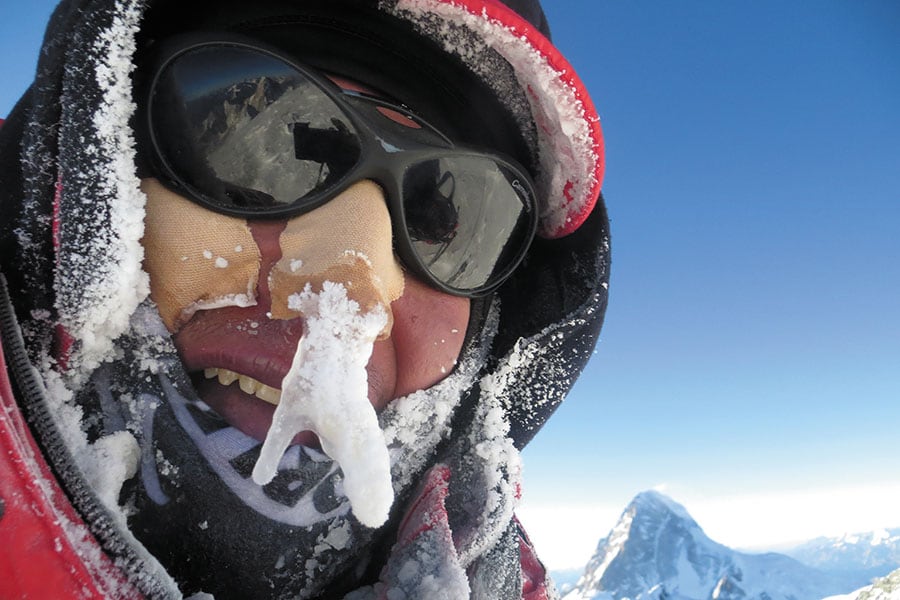 Image courtesy: Adam Bielecki
Image courtesy: Adam Bielecki
A lot of it is down to intuition in hostile terrain, believes Denis Urubko, who was part of two non-Polish teams to make the first winter ascents of Makalu in the Himalayas and Gasherbrum II in the Karakoram. This winter, the Kazakh abandoned a solo attempt on Broad Peak after being hit by an avalanche. “Your experience can help analyse the risk of avalanches and bad weather, but at times it is also possible to go ahead despite the danger. On Broad Peak, I saw the safety margin reducing with every step and decided to stop,” he says.
K2, the world’s second highest mountain peak located in the Karakoram, remains the only 8,000er that has not been climbed in winter, and remains a chase of top climbers, including Urubko. The peak is around 600 m higher than Gasherbrum I, and Bielecki explains what makes it so difficult a climb: “On the summit of Gasherbrum I, the wind was so strong and conditions so cold that I couldn’t even pull out my flag. I could just about make a few photos and head down. Climbing K2 is challenging since it’s a long slog to the top and the final section also features technical climbing on hard ice. It’s one of my prime objectives for the future.”
*****
But it isn’t just winter ascents that have captured the imagination of climbers. New, unclimbed routes during regular season have been a draw since the 1970s, besides Alpine-style speed ascents that have caught on in the last decade or so. And of course, without the aid of supplementary oxygen that most climbers consider to be against the rules of the sport. However, these objectives often prove to be a challenge in these times of commercial climbing.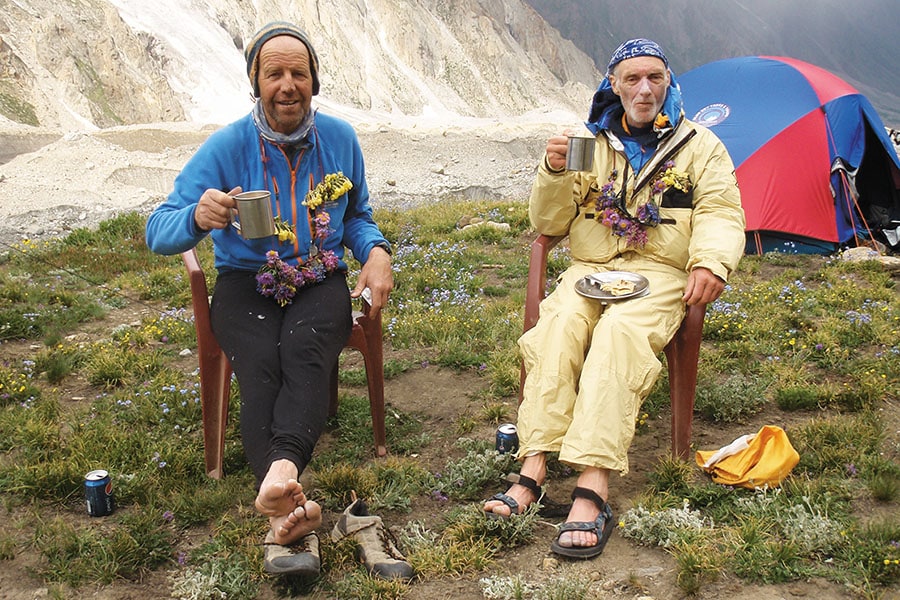 Rick Allen and Sandy Allan made the first ascent of Nanga Parbat, in the western Himalayas, via the 10-km Mazeno Ridge in 2012
Rick Allen and Sandy Allan made the first ascent of Nanga Parbat, in the western Himalayas, via the 10-km Mazeno Ridge in 2012
Image courtesy: Sandy Allan/www.tamaascent.co.ukLast spring, David Goettler attempted a solo climb of Everest without oxygen via the standard South Col route. At 8,750 m, he encountered a long line of commercial climbers ahead of him, which would delay his ascent significantly. With safety in doubt, he made a quick decision to retreat. “I simply wanted to see if I could climb Everest in a fair style, without oxygen while carrying all my gear. I was aware of all the other expeditions, and it is also a fact that I benefit from the work they do. This is why I never complained about the traffic jam high up,” says the German. Commercial climbing supports an entire ecosystem in Nepal every year, from the expedition operators to guides, porters and cooks.
Climbing new routes comes with its fair set of challenges. For instance, during his 2016 attempt on Shishapangma in the Himalayas, Goettler turned back on the 2,000-m southwest face due to bad weather while on a new route with Ueli Steck, a Swiss climber. The following year he was back on Shishapangma with Italian Herve Barmasse, who was on his first 8,000er. Though bogged down at base camp for most of the time, the duo made the most of a 24-hour window of good weather to blaze a trail (on a previously climbed route on the south face) with minimal gear in just 13 hours, but turned back a few metres short of the summit due to unstable conditions.
“Many climbers have demonstrated that lightweight speed climbs is the way to go and I feel it will be the way of the future,” Goettler says. “The freedom and safety it brings to someone who has trained and worked on his technical skills is immense. I feel I can react way quicker to changing circumstances and just enjoy the steady movement on a mountain.”
It was this approach that was adopted by a six-member team, including British climbers Rick Allen and Sandy Allan, which made the first ascent of Nanga Parbat, in the western Himalayas, via the 10-km Mazeno Ridge in 2012. Before that, there had been 10 unsuccessful attempts on the route, including one led by Doug Scott of England in 1995 that Allen and Allan were a part of. The entire route, featuring eight summits of around 7,000 m, had been a tricky proposition due to the altitude and exposure on the ridge. “There were a lot of unknowns, and that’s the good thing about mountaineering. We often have less information than what Nasa astronauts have about landing on Mars. But that’s the real adventure and some people have a knack for it like how an albatross flies around the Arctic and doesn’t get lost,” says Allan.
For 10 days, the team walked a tightrope to eventually get to the Mazeno Gap below the final summit pyramid. Along the way, the only female member of the team, Cathy O’Dowd, became the first woman to traverse the ridge. Having summited Everest from both sides in the past—again, the first woman to do so—this experience came as a contrast to her previous climbs. “The loads we carried were daunting on Nanga Parbat because we had to be self-sufficient,” O’Dowd says. “Besides, the level of effort, technical difficulty and risks were far higher on the Mazeno Ridge than on Everest.”
After an unsuccessful summit push, four of the six climbers chose to descend, even as Allen and Allan decided to have another go. On their second push for the peak, the two survived on half a packet of biscuits and tea, before running out of supplies on the descent when things got rough due to exhaustion and bad weather. “We did push our limits, but that was really after getting to the summit. Then again, we had prepared ourselves to not get rescued in the first place. So you have to do your homework and be prudent based on your experience,” says Allan.
In the 2018 regular climbing season, Allan and Allen were holed up on the summit camp of Broad Peak. While Allan decided to descend there on, Allen made the summit and had to be rescued soon after. “I thought Rick was absolutely crazy to continue up in the terrible weather. I think he had summit fever or something and I’ve stopped climbing with him ever since,” Allan says.
*****
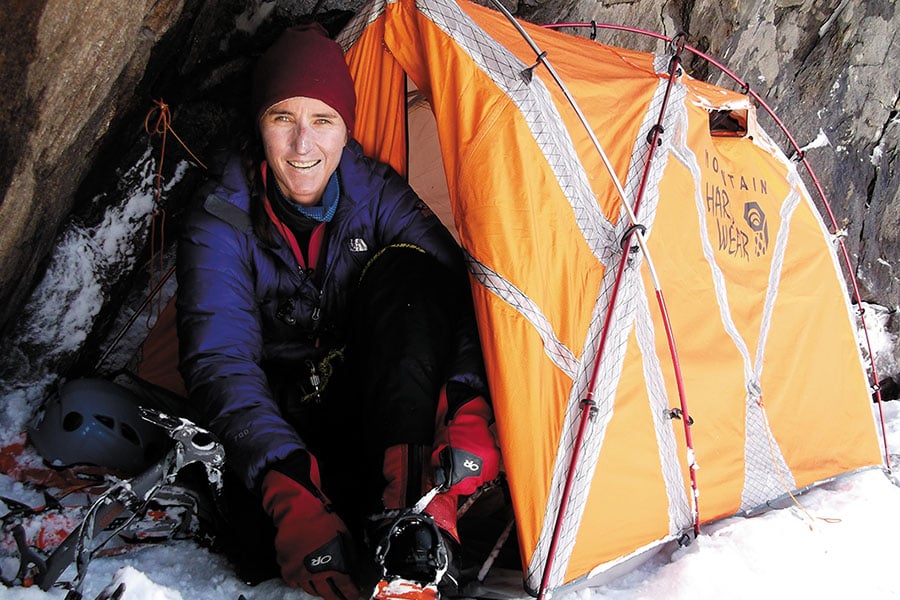 Cathy O’Dowd, who was part of the team, became the first woman to traverse the ridge
Cathy O’Dowd, who was part of the team, became the first woman to traverse the ridge
Image courtesy: Cathy O’Dowd
While Allen got lucky, thanks to a drone rescue, the cost of treading uncharted territory often comes at a price. In March 2019, Nanga Parbat claimed the lives of British climber Tom Ballard and Italian Daniele Nardi, who were attempting a winter climb via the Mummery Spur. In 2016, Txikon had made the first winter ascent of the mountain alongside Simone Moro and Ali Sadpara. But in 2019, he abandoned his own climb on K2 and joined the search party for Ballard and Nardi. “The route gets really complicated in winter because of the seracs [blocks of glacial ice] and the technical climbing between 6,300-6,700 m on the Mummery Spur,” Txikon says.
In January 2018, the same mountain had claimed the life of Polish climber Tomasz Mackiewicz, even as his partner, Elisabeth Revol of France was rescued by a team that included Bielecki. “The decision to temporarily halt our K2 climb that year wasn’t hard at all. There was nobody else in the area and if they had to be rescued, it had to be our team. When it comes to saving lives, you need to set aside your own goals,” Bielecki says.
In April 2017, Ueli Steck, one of the top alpinists of recent times, perished during a training climb on Nuptse in the Himalayas, while gearing up for an ambitious traverse of Everest and Lhotse. As a tribute to him, his partner, Tenji Sherpa, climbed Everest the following year. “The idea was to climb both Everest and Lhotse, and without oxygen. But when it got really windy, I decided to use oxygen to get to the Everest summit and abandoned the climb on Lhotse,” Tenji recalls. These days, Tenji finds it easy to switch between guiding clients on expeditions to earn his living, while chasing personal goals in alpine style.
As commercial climbers make a beeline for the Everest, Goettler believes there is a need to differentiate between the efforts put in by professional climbers and paying clients. Others such as Bielecki and Kobusch are happy to explore their share of winter climbs in the future, before training their eyes on lower, lesser known mountains. “There are still a lot of unclimbed peaks,” says Kobusch. “I see the future in exploration and visiting remote areas, and setting up new routes there. That’s been the past of alpinism and that’s exactly where I see the future right now.”
First Published: Apr 13, 2020, 16:27
Subscribe Now